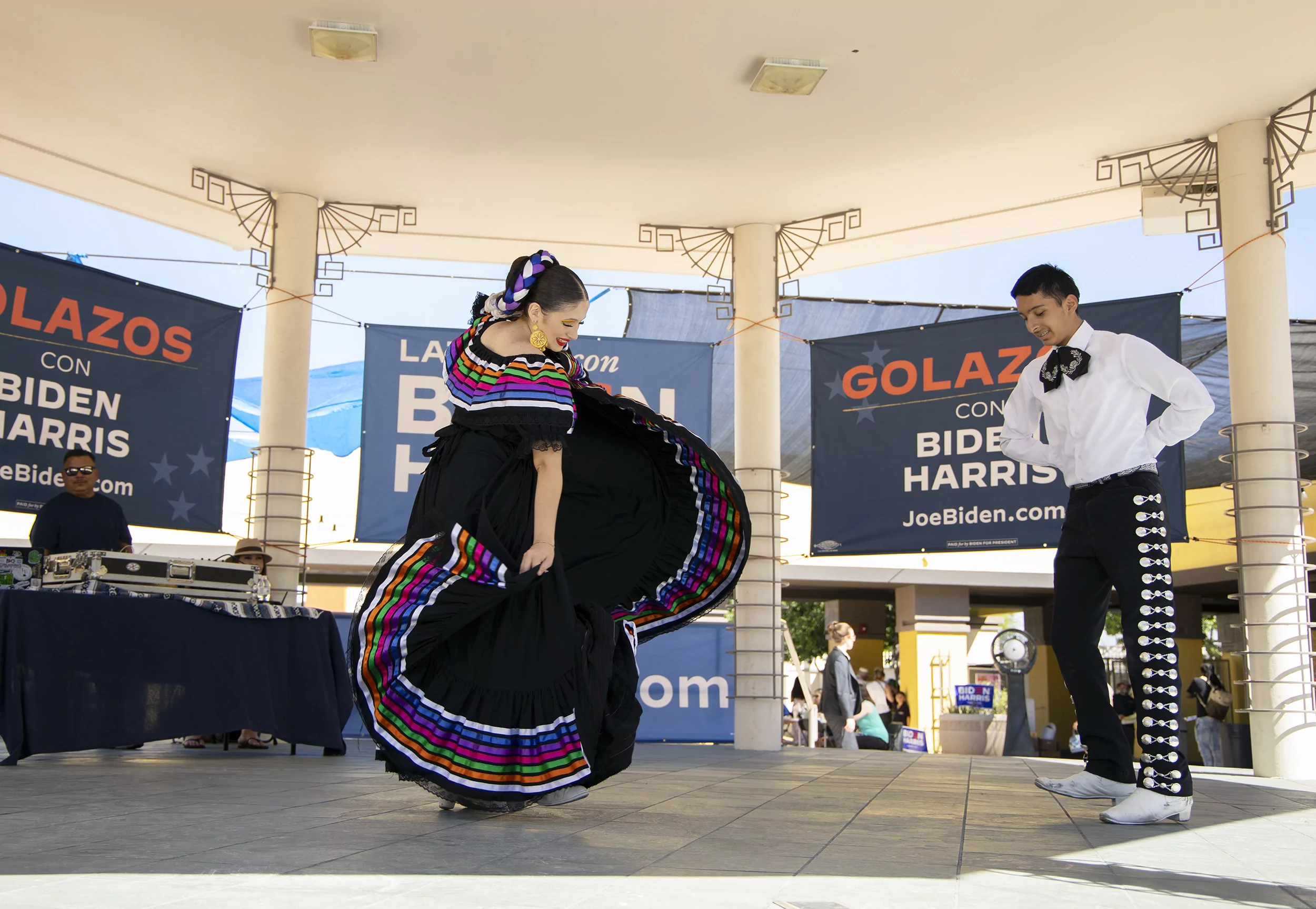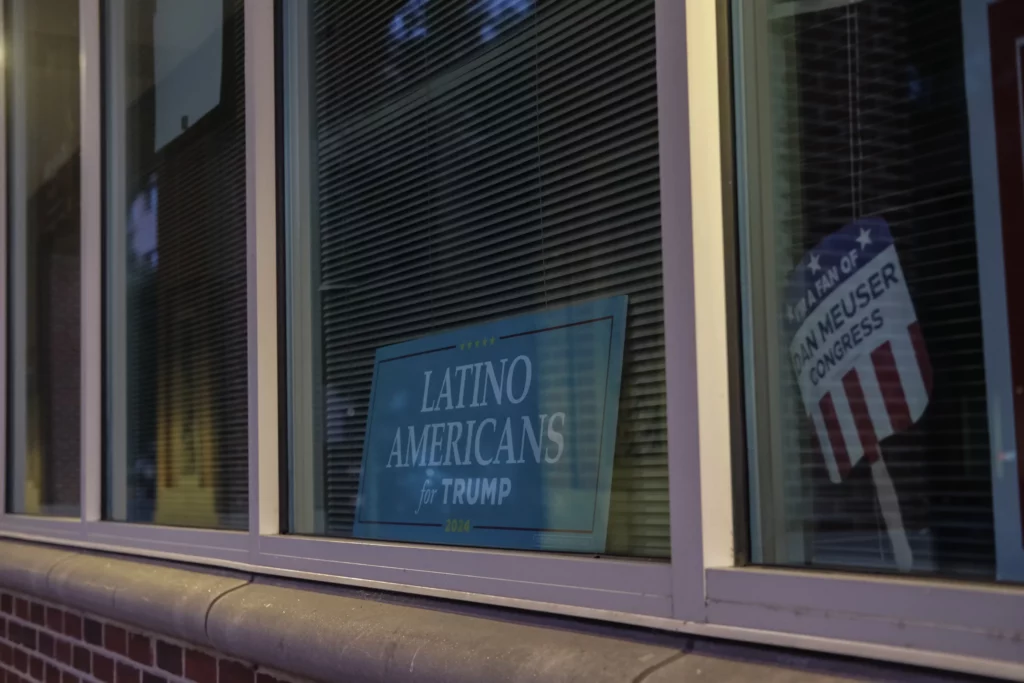
Vice President Kamala Harris’s campaign is launching new efforts to reach Latino voters, a key voting bloc that’s slowly been drifting from Democrats to Republicans in recent elections, putting the group at the center of a tug-of-war that could determine the outcome of the 2024 election.
In 2020, President Joe Biden won 64% of Latinos, who made up a significant part of his winning coalition. But former President Donald Trump improved on his 2016 numbers among Hispanic voters, particularly those without a college degree, according to a Pew Research study. Recent polling shows Trump’s appeal with Latino voters has grown since his 2020 loss, with some surveys finding him winning close to 40% of this critical demographic.
Mike Madrid, a longtime Republican operative who is the co-founder of the Lincoln Project, recently published a book, The Latino Century, which details how to win Hispanics and provides a breakdown of how and why this group is so often misunderstood.

“There is a rising blue-collar, non-college-educated workforce that increasingly does not identify themselves as a racial or ethnic voter, but more of an economic populist, pocketbook voter,” said Madrid, who has been tracking the seismic shifts in the Latino electorate for years.
“The fastest growing group of Latinos is third generation, U.S.-born, English-dominant or English-exclusive, that is increasingly occupying the construction sites, energy patch, assembly lines, and manufacturing facilities, and they’re voting like their non-Hispanic, white peers,” he added.
As National Hispanic Heritage Month begins, the Harris campaign is building on investments to reach Latino voters, announcing $3 million in spending on a Spanish-language radio effort and an organizing push in battleground states around baseball games and boxing matches.
The campaign added four Hispanic consultants to the team last week and are sending top surrogates and Latino leaders to battleground states to turn out support. They plan to organize around Mexican Independence Day, Sept. 16, in cities like Phoenix and Raleigh, while also attending sporting events and tailgates in key states like Michigan. They also started a WhatsApp channel.
“We recognize that this community is not a monolith and we are making sure our strategy reflects that. So, we have different accents in different states, which is reflective of the diversity of the community in each of the battlegrounds,” a spokesman with the Harris campaign said, speaking to the Washington Examiner. “Another thing we’ve done is communicate in Spanglish, which is really resonant with young Latinos.”

The campaign ran a pilot program in Arizona in 2023 to test organizing tactics and tools focusing on Latino and women voters using Reach, a grassroots organizing app to help engage volunteers both in person and online. The program allowed volunteers to tap into their individual networks to speak to friends and family about the election and to share content on social media or in group chats. The program has now been implemented across the country.
The Harris campaign said it has 17 offices in the Grand Canyon State, with plans to open 19 in total across the state with 150 full-time staff. The first field office in the 2024 cycle that opened was in Maryvale, a predominately Latino area of Phoenix. In August, the campaign made 34,000 Spanish calls and knocked on over a thousand doors in predominantly Spanish-speaking areas in the state.
Madrid’s largest criticism of Democrats’ outreach efforts is that they attempt to communicate with this demographic of voters primarily through Spanish or bilingual platforms. He pointed to recent polling that found Harris is favored by Latinos in Spanish-speaking and bilingual households at a higher rate than in English-speaking ones.
“The Spanish language segment of the electorate is very small, relatively small, and it’s getting smaller as the growth is happening with the third generation and beyond,” he explained. “That’s not where they are going to win elections, they need to be competing more for this third-generation blue-collar worker that’s U.S. born and views themselves as completely and fully American.”
“The other underlying problem is that Democrats just broadly have a problem with working-class voters. Latinos have become the largest part of the working class nationally, so they’re gonna have problems with Latinos,” Madrid said.
Trump is trying to convince this group that Harris is not the solution to the concerns they have about the economy, which is a top worry among all voters, according to recent polling.
Republicans believe they have a chance to improve on Trump’s 2020 performance with Latinos, zeroing in on the economy and public safety.
“Latinos, Hispanics, represent about 20% of the electorate and particularly important in Nevada, in Arizona — they are significant across the country, but in those two states, they really make the difference and they have been trending Republican over the last decade,” said Frank Luntz, a pollster and communications strategist, in an interview on C-SPAN on Sunday.
“I think Trump has a chance to capture about 45% of them, which would be the best vote Republicans have ever had, and if Republicans can get 45% of the Latino vote, they win,” Luntz added.
Madrid is downplaying some expectations that Trump could get 40% of the Latino vote, pointing to examples like his recent comments at the debate amplifying false rumors that Haitian immigrants in Ohio were abducting and eating pets.
“He’s veered into this pet-eating immigrant phase, which is really limiting his upside potential,” Madrid said. “He was on a trajectory to build on gains in 2020; he’s probably put a ceiling on that, and by all estimations, he’s going to keep that rhetoric going, and that’s not going to help him.”
The Trump campaign said it is working to engage voters at events and rallies, door-to-door canvassing, phone banking, and participating in festivals and parades. In early June, the Trump campaign rebranded its Hispanic outreach switch from “Latinos for Trump” to “Latino Americans for Trump,” emphasizing that Latinos are American.
“When they changed the name, that was actually a very smart strategic messaging move because most of these voters that are moving to the right and provide the biggest opportunity for Republicans view themselves as fundamentally American,” Madrid said.
“Where Democrats are drawing stations and saying you’re separate, you’re unique, you’re different, you’re Spanish-speaking, you’re a small part of this diaspora, the Republicans are saying the exact opposite,” he added. “That message alone, I think goes a long way.”

The Trump campaign said its efforts with the Latino Americans for Trump coalition are led by large groups of staff and volunteers who live in each of the communities.
CLICK HERE TO READ MORE FROM THE WASHINGTON EXAMINER
“In terms of media outreach, we are also targeting Hispanic and English media outlets to reach persuadable Latino voters in battleground states,” said Vianca Rodriguez, the Trump campaign deputy Hispanic communications director, in a statement to the Washington Examiner. “We are also working closely with Latino/Hispanic influencers who are making their platforms available to reach and speak directly with voters.”
However, it appears both campaigns have a lot more work to do with Latino voters. A recent UnidosUS poll revealed 55% of Latino voters nationwide said they haven’t been contacted by either Harris or former President Trump. In the critical battleground of Pennsylvania, where there are roughly 600,000 Latino voters, 49% said they have not been contacted.





